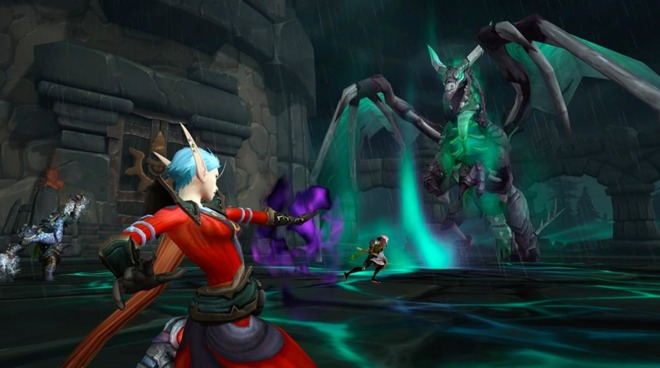Blizzard updates 'World of Warcraft' with native support for Apple Silicon
Players of "World of Warcraft" will be able to continue gaming on the new M1-equipped Macs, with Blizzard's latest patch adding native support for Apple Silicon.

In a post made to its community forums, Blizzard advised the 9.0.2 patch due this week for "World of Warcraft" will "run natively on ARM64 architecture, rather than emulation via Rosetta."
Rosetta 2 is Apple's translation software to enable programs made for x86 architecture to function properly on the new M1 system-on-chip. Using Rosetta 2 will impact a program's performance, so shifting to native support frees up resources that can be put towards rendering the game at a higher frame rate or quality.
"We're pleased to have native day one support for Apple Silicon," Blizzard adds. The game company also warned that it is "highly aware of the nature of day one support with updates like this" and asks users to report any issues that may be related to Apple Silicon to its Mac technical support forum.
The announcement by Blizzard is encouraging for the gaming industry, as "World of Warcraft" continues to be one of the more important games being played today. The native support may encourage other developers to rework their games to do the same, instead of taking the small performance hit from Rosetta.
Blizzard's announcement follows similar moves by Pixelmator, Adobe, Parallels, and VMWare to support M1.

In a post made to its community forums, Blizzard advised the 9.0.2 patch due this week for "World of Warcraft" will "run natively on ARM64 architecture, rather than emulation via Rosetta."
Rosetta 2 is Apple's translation software to enable programs made for x86 architecture to function properly on the new M1 system-on-chip. Using Rosetta 2 will impact a program's performance, so shifting to native support frees up resources that can be put towards rendering the game at a higher frame rate or quality.
"We're pleased to have native day one support for Apple Silicon," Blizzard adds. The game company also warned that it is "highly aware of the nature of day one support with updates like this" and asks users to report any issues that may be related to Apple Silicon to its Mac technical support forum.
The announcement by Blizzard is encouraging for the gaming industry, as "World of Warcraft" continues to be one of the more important games being played today. The native support may encourage other developers to rework their games to do the same, instead of taking the small performance hit from Rosetta.
Blizzard's announcement follows similar moves by Pixelmator, Adobe, Parallels, and VMWare to support M1.

Comments
*not soon
My G5 is gathering too much dust.
Coincidentally, I just spent the afternoon reminding myself why I haven’t finished Broodwar.
I installed Starcraft on my iMac through Battle.net, moved my saves from my old PC, played the same mission over six times, looked up advice on it, found I WAS doing what we are supposed to do... and lost interest again.
Starcraft is the only strategy game I ever enjoyed, but I don’t enjoy challenges anywhere as much as I did a decade ago... and I didn’t enjoy them much then.
Anyway, cool game, but it’s not for me anymore. None of their stuff is. I’m glad they keep their code up-to-date, but that’s mostly down to the fact that video gaming has become “e-sports”, where watching obsessive gamers play is now big business. This is also not for me.
Here's hoping the successors to the M1 for peppier machines than the M1 models so far announced do even better at graphics-intensive tasks.
It would be fascinating to learn from Blizzard how much dev time it took to carry out the port.
And kudos to Blizzard, who just a year or so ago were folding their Mac dev team into the general one and raising fears of dropping all Mac support. Wouldn't it be a kick in the pants for the Windows game industry if it turned out that Macs with onboard graphics turned out to have competitive performance with custom-built x86 game systems?
Some people insist that only 60 FPS is good enough for them. You can get close to that in a variety of settings on M1 Macs, but it won't be using all the highest quality settings. If you want the best of everything, then an M1 Mac isn't your best choice. Maybe the M2 next year will be more to your liking, but maybe not. It's possible that Apple will sell M2 Macs with discrete graphics next year, or maybe Apple will simply catch up to discrete performance with their GPUs instead. My wild guess is that M2 iMac Pro and M2 Mac Pro will support discrete graphics in 2021 or in early 2022.
Eg. People complaining that the M1 MBP’s specs suck compared with the higher end Intel 13” MBP or same with the M1 Mac Mini against a fully decked out 6-core 64GB Intel Mac Mini... they don’t get that these M1’s don’t replace those machines and more is coming to replace those instead.